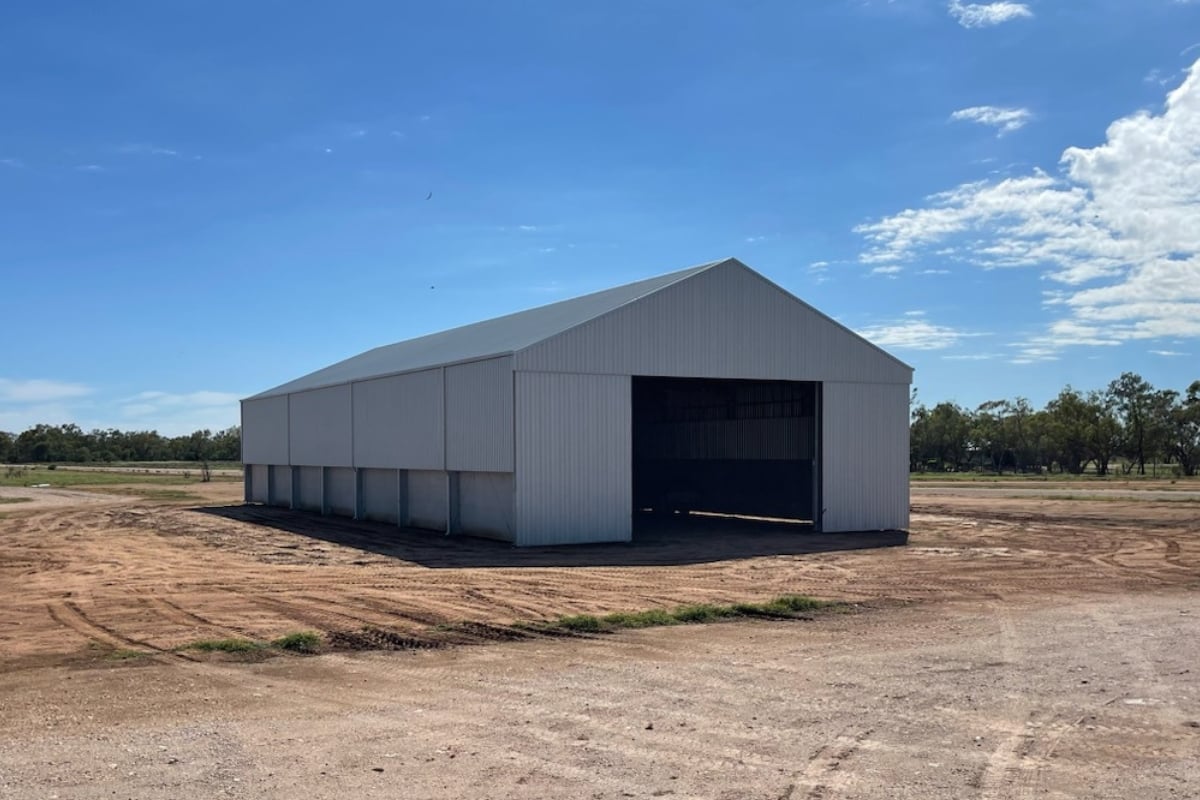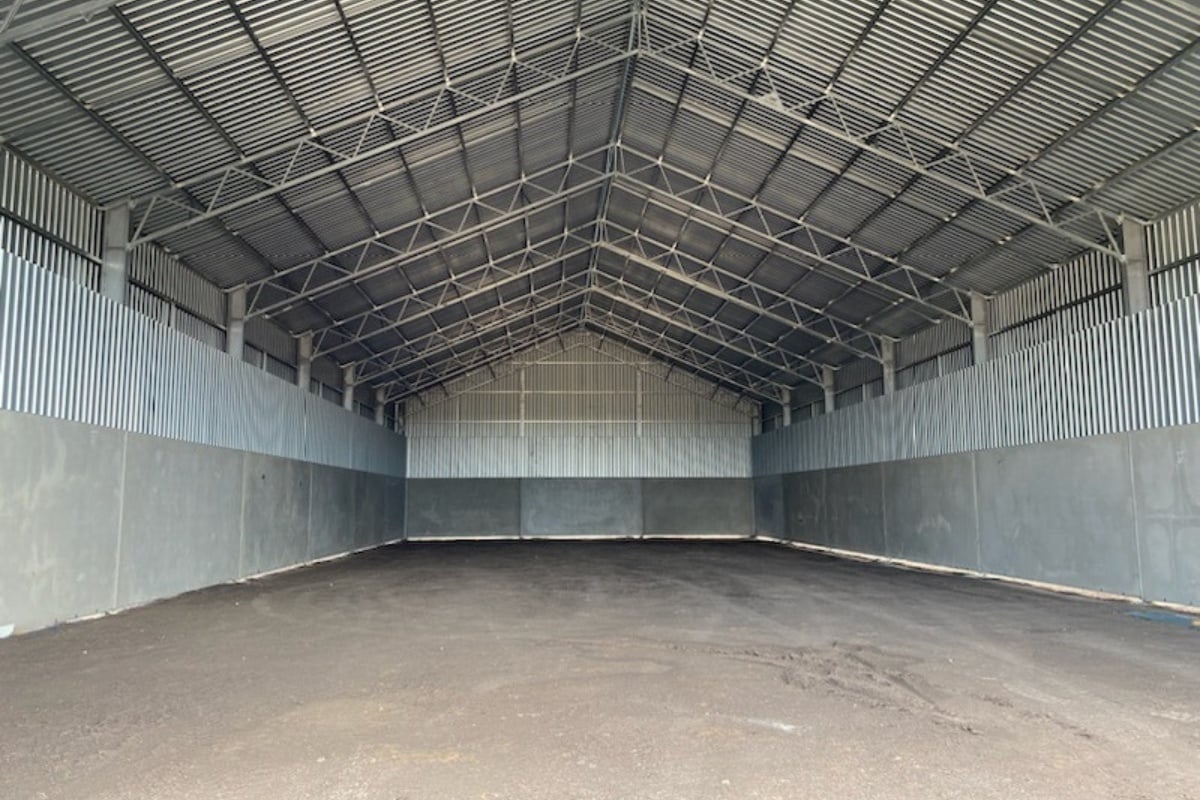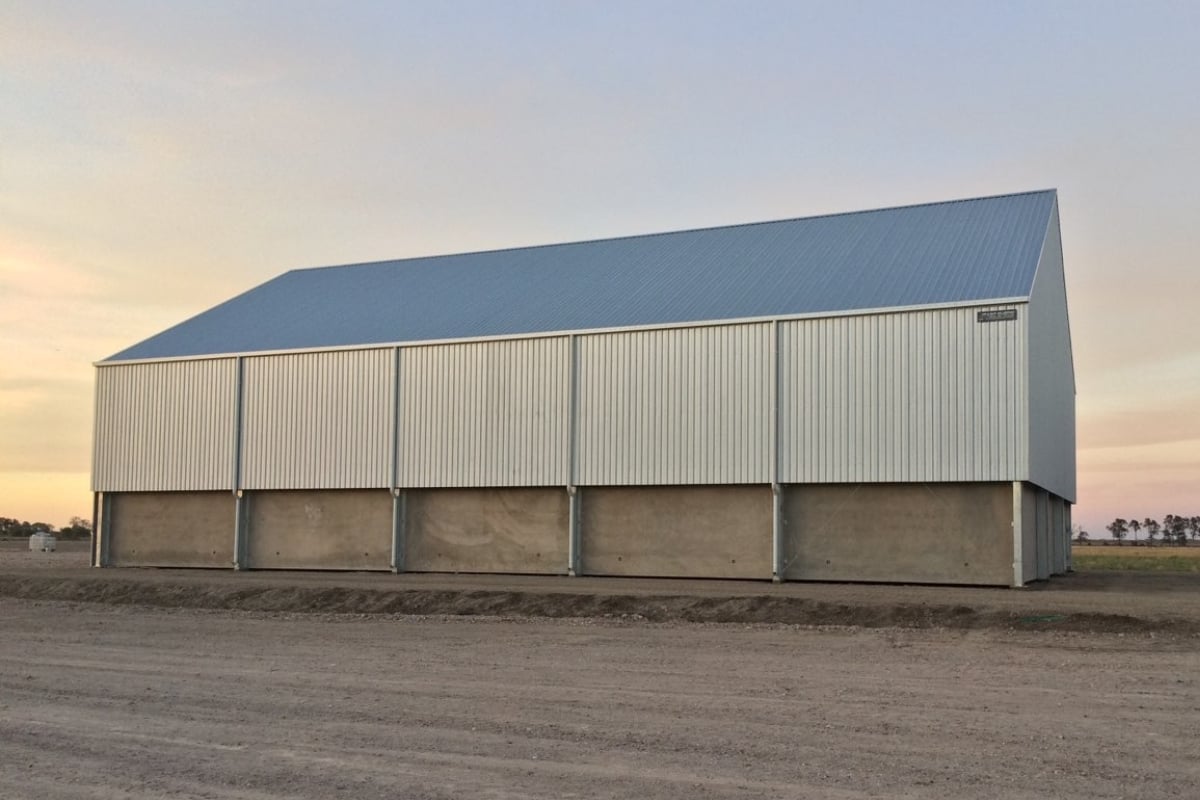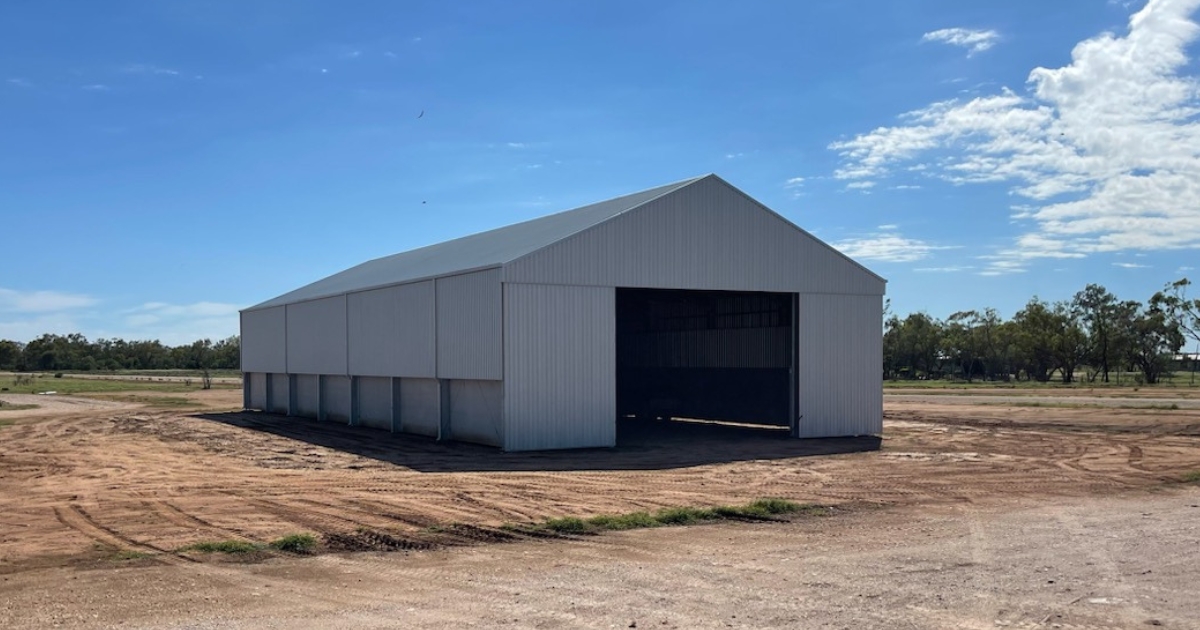The benefits of fertiliser storage

Correctly storing your fertiliser is critical, especially in light of the current urea shortage in Australia. A storage shed enables you to purchase fertiliser when the prices are lower and keep your farm well stocked at all times.
In this article, we discuss the key benefits of fertiliser storage, how to store fertiliser, and the current challenges facing the fertiliser industry.
The urea shortage
A urea shortage is currently impacting a large portion of rural Australia, leaving many farmers without. An unexpectedly wet winter meant growers weren’t placing enough orders and suppliers weren’t contracting to importers. Additionally, a decline in urea prices discouraged many growers from purchasing.
The northern and southern regions of Australia were impacted the most and will be considering actions they can take to reduce risk. In Western Australia, fertiliser suppliers estimated they met 85 to 90 per cent of the urea requirement in 2023.
In response, the Grains Research and Development Corporation (GRDC) has emphasised the importance of on-farm storage.
The benefits of on-site fertiliser storage

If you don’t have on-farm storage for your fertiliser, you’re likely spending a lot of time and money on ordering it on demand. Fortunately, a fertiliser shed offers the following advantages.
Control over your fertiliser supply
On-site storage allows you to control how much fertiliser you need to order and when. In times like this where the supply chain is strained, you can continue operating and keep your farm well-fertilised.
If your fertiliser is disrupted or market conditions make it difficult to source fertiliser, having stored fertiliser on your farm will save a lot of money and stress. When these challenges arise, you can make strategic decisions about how much fertiliser to use and how much to stockpile.
Cost-effectiveness
Through bulk purchasing and storing fertiliser when it is more affordable, you can reduce your average spend. By investing in a large fertiliser shed, you can always stock up in advance to avoid high prices during shortages and periods of high demand. There’s also more opportunity to benefit from discounts and seasonal deals.
Flexibility in fertiliser application
By storing your fertiliser in advance, you can decide when the best time is to apply it. By keeping a close eye on the weather forecast and your crop development, you can spread fertiliser when it suits you best.
Sustainable and efficient
On-farm fertiliser storage reduces the need for frequent deliveries as you can simply place one large order when prices are lower and store it for longer. This not only saves the delivery fees but also reduces the carbon footprint of your farm.
Fertiliser storage sheds

Storing your fertiliser in a shed is cost-effective, convenient, and adaptable. To ensure your storage shed is suited to your needs, you’ll need to think about the correct storage conditions, the compatibility of your fertilisers, and storage regulations. At ABC Sheds, our fully engineered fertiliser sheds ensure that your fertiliser remains safe and dry in all seasons and conditions.
Key advantages of our fertiliser sheds include:
- Galvanised frames to protect against a highly corrosive environment.
- Built with the Australian climate in mind.
- Compliance with Australian building codes and quality standards.
- Custom designs for your storage needs.
- 25-year guarantee on all fertiliser sheds.
How to store fertiliser
The best conditions for fertiliser storage are as follows:
- A steady temperature between 5˚C and 30˚C, depending on the compound.
- Effective ventilation.
- No rain or sunlight.
- No moisture, dirt, or dust.
- A first-in, first-out stock rotation.
- Incompatible chemicals are stored separately.
Fertilisers containing Nitrogen (N) or Potassium (K) are more likely to absorb moisture so, if your farm is susceptible to humidity, a pure Phosphorous (P) formulation is more appropriate. For more information, read our article about how to store fertiliser correctly.
Incompatible fertiliser types
Be careful to store different types of fertiliser separately. When stored together, they may react prematurely, cause safety issues, or lose effectiveness. By understanding Hygroscopicity, caking, particle shape, bulk density, and compatibility, you can store each fertiliser type correctly and avoid the risk of potential reactions.
For example, urea should not be mixed with Ammonium Nitrate, Calcium Ammonium Nitrate or Ammonium Sulphate Nitrate. Additionally, sulphur is combustible and can react with various nitrates. Sulphur should not be mixed with nitrates AN, KNO3 and NaNO3.
ABC Sheds can provide sturdy concrete bunkers to separate your various fertilisers safely.
Storage capacity
Most fertiliser sheds are identified by their storage capacity in tonnes. For example, we’ve designed and built sheds from 300-tonne capacity to 1,200-tonne capacity. The right shed for your farm will depend on the amount of fertiliser you use regularly, plus any allowances for market fluctuations. If in doubt, ask our team for more information.
Shed storage vs. silo storage
Shed storage proves to be a very popular method of fertiliser storage due to its functionality. While silos may be more air and water tight they are slow to load and unload, and they are limited in their use to storing bulk commodities.
In comparison, using a shed can ensure quicker fertiliser load/unload times by utilising loaders, rather than augers. In addition to this, many farmers will find that during parts of the year their shed may be empty of fertiliser so instead, they can choose to store their machinery so that it’s protected from the weather.
Fertiliser storage Australia
If you’re ready to control your fertiliser supply and save money, request a no-obligation quote or browse our fertiliser sheds today.
-1.png?width=3641&height=660&name=abcshedstransparent2%20(1)-1.png)




